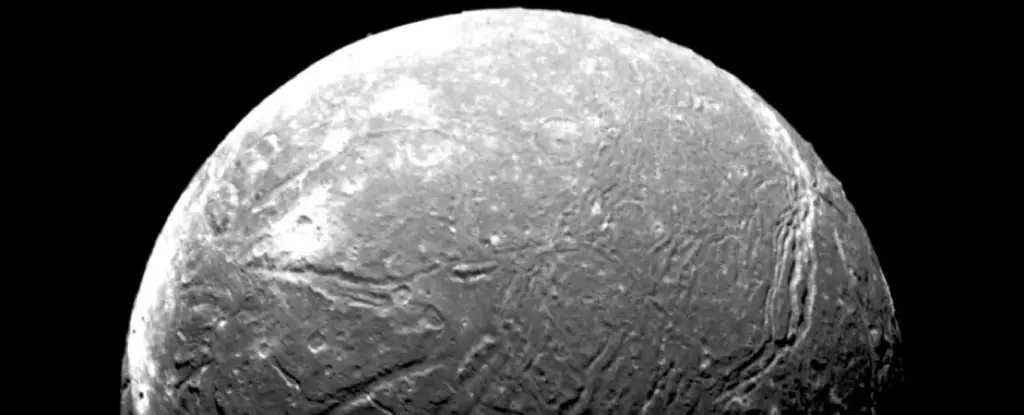Ariel, one of the five moons of Uranus, has long been a subject of fascination for astronomers. Discovered in 1851 by William Lassell, this icy moon is known for its diverse geological features, including canyons, ridges, faults, and valleys. The surface of Ariel is constantly changing due to tectonic activity, with cryovolcanism playing a significant role in resurfacing the moon.
Recent observations from the James Webb Space Telescope have revealed a surprising finding on Ariel’s surface – significant amounts of carbon dioxide ice. What makes this discovery even more intriguing is the location of the ice predominantly on the trailing hemisphere of Ariel, away from the orbital direction. This observation has led scientists to hypothesize the presence of an underground ocean on Ariel.
Previously, it was believed that the carbon dioxide on Ariel’s surface was a result of interactions with charged particles in Uranus’ magnetosphere through a process known as radiolysis. However, the spectral analysis conducted by astronomers using JWST has challenged this theory. The results showed that Ariel has some of the most carbon dioxide-rich deposits in the solar system, along with unexpected signals of carbon monoxide.
While the hypothesis of radiolysis playing a role in the carbon dioxide deposits on Ariel is still valid, the presence of carbonate minerals suggests a more complex origin. The interaction between rock and water in a subsurface ocean could be the main contributor to these deposits. To confirm these theories and unlock the mysteries of Ariel, a future space mission to Uranus is essential.
A robotic explorer sent to the Uranian system could potentially reveal the origin of the carbon oxides on Ariel. By investigating the canyons, fissures, and grooves on the moon’s surface, scientists may be able to access its interior and gather crucial data. Despite the Voyager 2 mission providing valuable insights, the need for a more comprehensive exploration of Ariel and its hidden secrets remains imperative.


Leave a Reply